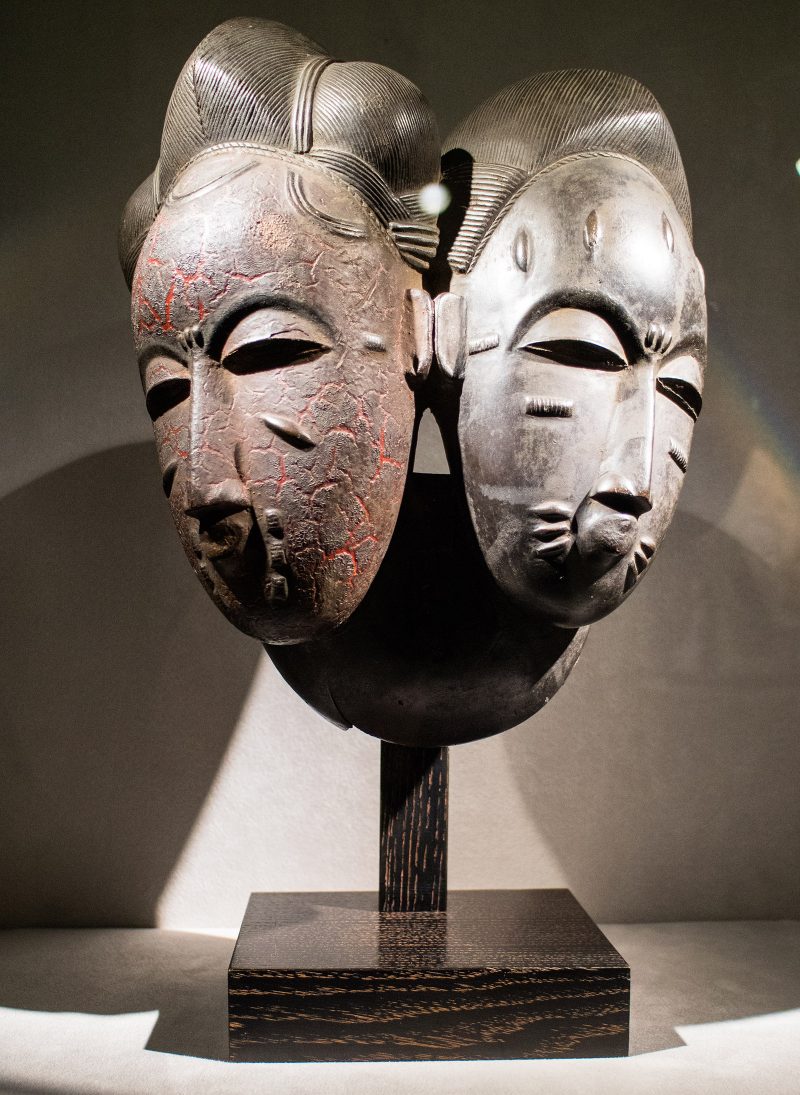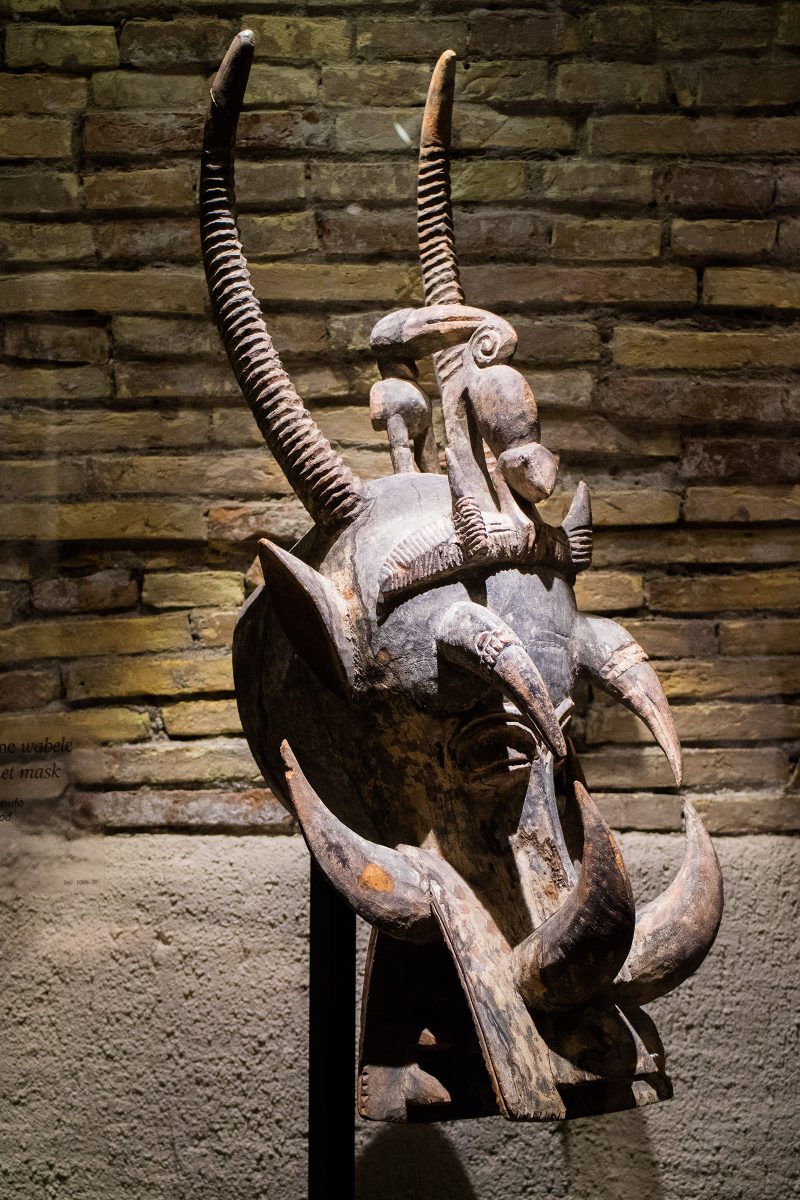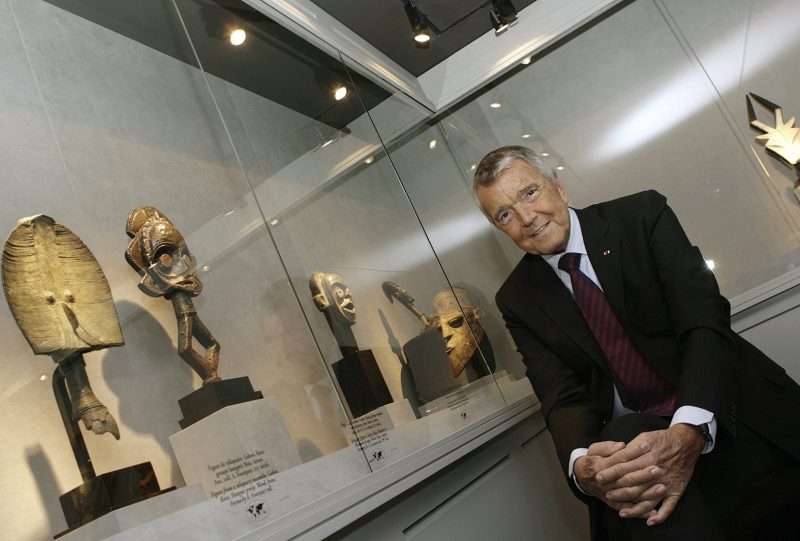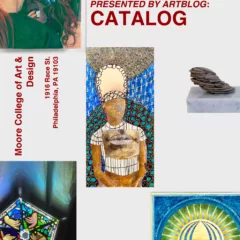Walking along the narrow cobblestone streets of Geneva’s medieval city center, the last thing I expected to find was a museum filled with African art. Located on the historic rue Jean Calvin (founder of Calvinism and Geneva’s most famous native son), around the corner from the church where Calvin and John Knox preached the radical ideas of Reformed Christianity in the sixteenth century, the Musée Barbier-Müller houses an incredible private collection, including a substantial amount of African art. Its current exhibition, The Arts of Ivory Coast around the Yaure, may be one of its last. Jean-Paul Barbier-Müller, head of the family foundation and owner of the vast collection of objects in Geneva, died on December 22, 2016, and the fate of the collection as a whole remains uncertain.

From West Africa to Geneva
There are some stunning objects here–a carved wooden nda (twin) mask depicting two female faces looking in opposite directions, conjoined in the middle like Siamese twins or a Janus-faced god of Antiquity; a helmet mask decorated with hybrid birds and beasts whose subtle asymmetry evokes the movement of dance; a spectacular mask of intricate golden filigree that glows like something alive and full of energy under the lights; a nkisi (or power figure) from Congo bristling with nails and brandishing a spear, challenging me to acknowledge its power like generations of people before me have. Imagine the African art collection of Dr. Albert Barnes on a much grander scale, displayed on its own and not alongside 20th-century European painting.

Organized by geography and ethnicity, the objects in The Arts of Ivory Coast around the Yaure are attributed to peoples (for example, Yaure, Senufo, or Baule), and these ethnic labels are in turn mapped onto the geography of Africa and visualized in a large map on the wall of the gallery. On the gallery labels, these generalized ethnic attributions contrast to the specific names of the European individuals who bought and sold these works of art in the first half of the 20th century. (There is even a carved wooden panel formerly in the collection of famous fashion designer, Christian Dior). On the walls are color photographs of West African people and landscapes that couldn’t seem farther removed from the buttoned-up bourgeois surroundings of Geneva, a world financial center, but what struck me was the extent to which the lives of these objects are intertwined with the lives of their collectors.

The perils of provenance and the challenges of collecting
Before his death, Barbier-Müller added to the substantial collection of early 20th-century painting, as well as Native American, African, and Ancient art formed by his father-in-law Josef Müller. The Geneva museum has a changing program of exhibitions highlighting different aspects of the broad collection, from Cubist painting to African sculpture. Like the Barnes, the Barbier-Müller collection comes out of the early 20th-century vogue within modernist circles for African art, which was profoundly implicated in the realities of 19th- and 20th-century colonialism. It also brings up important questions about buying, selling, and displaying non-Western art that get overlooked in exhibits that emphasize the otherness of African art and artists, who are rarely granted any agency in the production and circulation of work in the global art market.
The African objects at the Barbier-Müller stand out because they have been in European collections since the early 1900s. Believe it or not, that’s really impressive provenance information for these sorts of objects, many of which just pop up on the art market with next to no information about how they were acquired or from whom, much less about who made them. Many works on view come from Josef Müller’s original collection, who in turn purchased works from well-known figures like Emil Storrer (works from Storrer’s collection show up in major museums around the world, like the Metropolitan Museum of Art). Scholars are still trying to understand the complex lives of these objects, and having a collection that’s been in one place for over 50 years really helps!
One of the great unspoken questions that hangs over this exhibition is, what will become of this great collection and the museum itself? Fear for their future is not unfounded, given recent history. Back in 1997, Barbier-Müller lent some 310 works of Pre-Columbian art to Barcelona to establish the Barbier-Müller Museum of Pre-Columbian Art. In 2013, the museum was forced to close its doors after the Barcelona government and the Barbier-Müller Foundation were unable to reach an agreement about the sale of the objects to the city. The collection was split up and sold at Sotheby’s in Paris for over 10 million euros. This episode is a sobering reminder of the harsh realities of the art market, where profit trumps the integrity of historic collections and complicates art our ability to access and study these works of art. I hope that this will not be the fate of the African collections of the Musée Barbier-Müller in Geneva, but we should enjoy them while we still can.
The Arts of Ivory Coast around the Yaure is on view at the Musée Babier-Müller (rue Jean Calvin, 10 – Geneva, Switzerland) through April 30, 2017.









